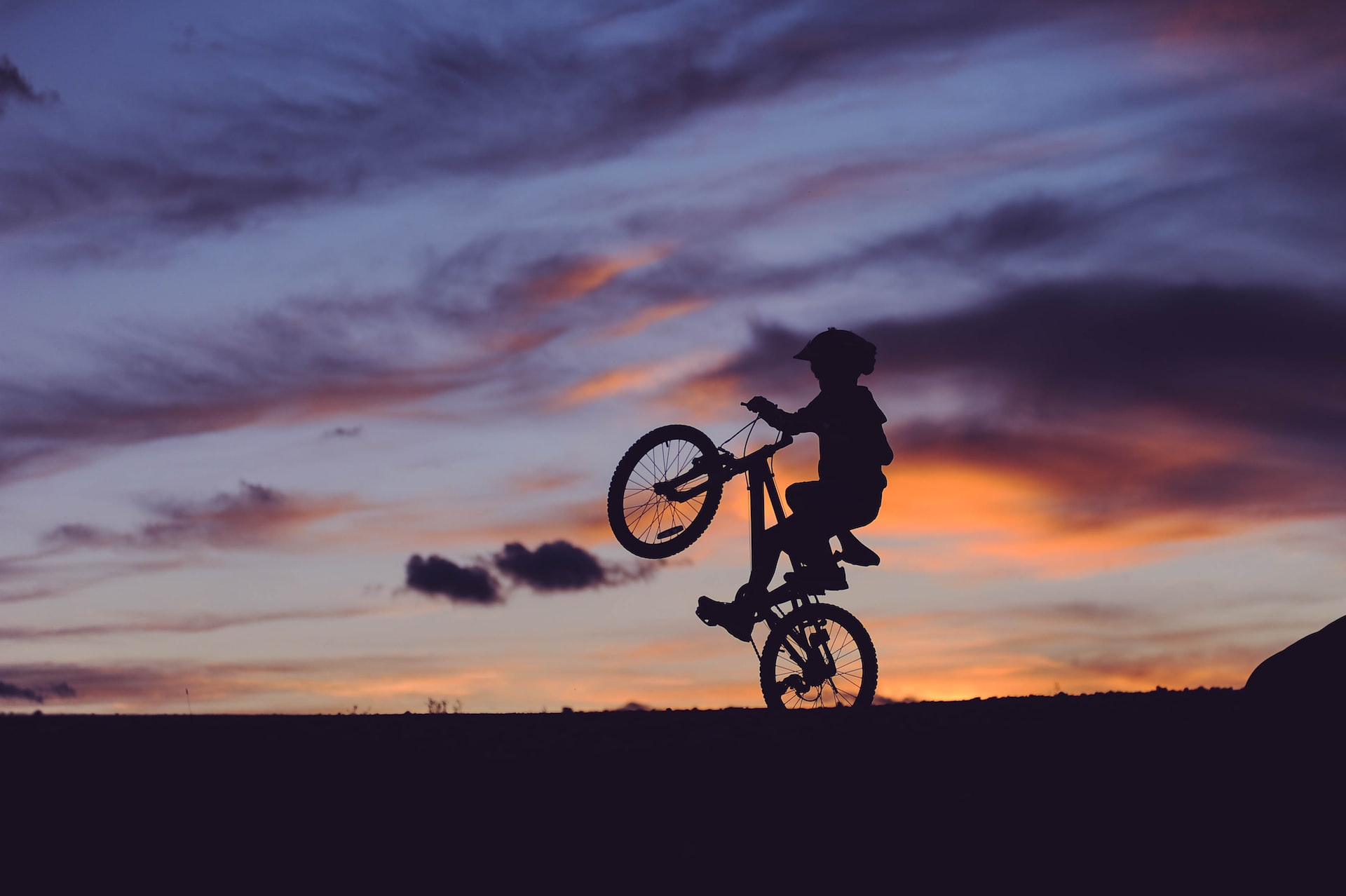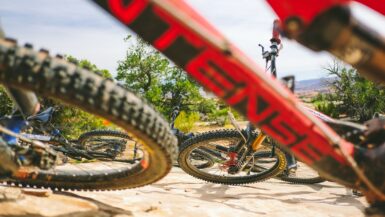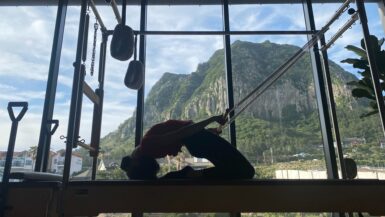Mountain biking is a great way to get outdoors and enjoy the natural beauty of the outdoors while staying active. For kids, mountain biking can provide an exciting and healthy means of exercise and adventure. But getting started with mountain biking can be difficult, especially regarding safety. This article will overview how to get started mountain biking for kids and what safety tips should be kept in mind.
Appropriate Gear
Mountain biking for kids should begin with an appropriate bicycle. The right bike is essential for a child’s success and enjoyment of the sport. Kids’ bikes should have a lightweight aluminum frame, a lower top tube, and a standover height that suits the child’s proportions. A mountain bike with full suspension or a hardtail is preferable; the extra cushioning will protect young riders from bumps and vibrations associated with off-roading.
Protective Gear
When mountain biking with kids, it’s essential to ensure they are adequately protected. A helmet is a must; helmets should fit snugly and be appropriately adjusted. Knee and elbow pads are also recommended to provide extra protection from falls. Sunglasses, gloves, and bright colors will help kids to remain visible at all times.
Safety Tips for Kids
In addition to proper gear, there are several safety tips kids should remember when mountain biking. Setting a good example is critical; kids should always follow safety rules and ride on designated trails. It’s important to teach kids to stay aware of their surroundings to avoid any distractions that could jeopardize their safety. Kids should also be mindful that they are ultimately responsible for themselves and their actions while cycling.
Supervision
Parents and guardians should always be present to supervise kids when mountain biking. Adult company is essential for younger children and can help kids to become more aware of their safety. Parents can also provide support and guidance to help kids develop mountain biking skills.
Suitable Trails
Mountain biking can be a great way to get kids outside and active. But it’s vital to find trails that are appropriate for the skill level and experience of the kids. Beginners should start with wide paths with a gentle grade that offer plenty of opportunity to practice basic mountain biking skills without fear of steep drops or significant obstacles.
Assessing the Level of Difficulty
Parents should be mindful of the difficulty level of a given mountain biking trail before allowing their kids to ride it. Generally, courses are broken down into categories from very easy to difficult. Look for tracks with low-level ratings that match the skill level of the riders, and be sure to stay within their limits.
Inspecting the Surrounding Environment
In addition to assessing the difficulty level of a trail, parents should also look at the surrounding environment. Are there areas with wildlife or large rocks that may cause a hazardous situation for the riders? Are there any obstacles the kids may not be able to navigate safely? If the answer to these questions is yes, the trial may not be suitable for kids.
Ensuring Safety Gear Is Included
Before heading out on any mountain biking adventure, ensure the kids are equipped with the necessary safety gear. This includes a properly fitting helmet, gloves, elbow and knee pads, and appropriate clothing for the weather. Ensure the bike is in good working order and all brakes and gears are functioning correctly before hitting the trail.
Supervising the Ride
Finally, parents or guardians must stay with the kids while riding. This not only allows you to ensure they are staying on the right trail and within their abilities, but it also provides a layer of assurance that your child is safe if any emergency arises.
Routes and Distances
Mountain biking for kids is a fantastic way to explore the great outdoors, and it’s a fun sport for the whole family. To get started, it’s essential to plan out routes and distances for your family’s mountain bike rides, and there are some essential safety precautions to take before you hit the trails.
Finding the Right Routes
While you want to find challenging trails without being too tricky, looking for age-appropriate courses is essential. Start by looking for rated green routes designed for beginner riders. As your kids become more experienced mountain bikers, you can move up to blue- and black-level trails. Always research each trail you ride, and ensure your kids understand the trail’s difficulty.
Sticking to Rides of Moderate Distance
While it may be tempting to tackle long-distance routes, it’s best to start your kids off with shorter rides. Begin with passages that are no longer than 10 to 15 miles, and ensure that the pace is comfortable and manageable. As your children gain more experience, you can gradually increase the distance.
Safety Tips for Kids Mountain Bikers
Regarding mountain biking for kids, safety should be your highest priority. Ensure your children wear helmets, appropriate clothing, and protective eyewear. Additionally, it’s essential to keep up with bike maintenance; have a professional check the bike regularly and ensure that the brakes, tires, and pedals are in good condition.
Finally, bringing along water and snacks for long rides is essential. Carry a map of the area in case you get lost, and ensure that children never ride alone. With the proper precautions, you and your family can explore the great outdoors with mountain biking for kids.
Basics of Mountain Biking
When it comes to mountain biking for kids, it’s essential to ensure they’re riding the right bike. There are several types of mountain bikes available, and the best one for kids depends on their age, skill level, and the type of terrain they’ll be riding on. For instance, an all-mountain bike would be ideal for an experienced rider looking to tackle more technical trails. For younger or less experienced riders, a cross-country bike may be a better option. Buying a motorcycle the correct size is essential, ensuring it fits the rider before taking it out on the trail.
Basic Mountain Biking Skills
When it comes to mountain biking for kids, it’s essential to start by teaching them the basics. Before heading out on the trail, ensure they understand the different gears, how to use them, and how to shift their bike. It’s also vital for them to know how to balance the bike and stay in control of downhill sections. Lastly, teach them the proper techniques for tackling different terrains, such as tight turns, rocky areas, and jumps.
Mountain Biking Safety
Safety is a top priority when mountain biking for kids. Before heading out, ensure they have the proper safety gear, such as a helmet, elbow and knee pads, and gloves. Additionally, teach them to always stay in control of their bike, look out for obstacles and other riders, and be aware of the trail. It’s also essential to have a plan for getting home if they get lost or hurt while out riding.
Finding Places to Ride
One of the most exciting aspects of mountain biking for kids is exploring new trails. Before heading out, local research courses to find ones suitable for the rider’s age and skill level. Make sure to also check the weather and any trail closures before heading out. Also, consider renting a bike for the first few rides to ensure your child enjoys it before investing in their motorcycle.
Encouraging Your Child
Encouraging your child to take up mountain biking is a great way to get them involved in a sport that can be both physically and mentally stimulating. To ensure your child has the best possible experience, it is vital to create an encouraging environment. Talk to your child about mountain biking and explain how fun and rewarding it can be. Praise and reward your child for efforts taken and successes achieved. Find a local mountain biking club your child can join to provide a safe and enjoyable learning environment.
Get Them Ready
Before hitting the trails, you must take critical steps to ensure your child is prepared and safe. Get your child’s right bike and gear according to age, size, and ability. Invest in a properly fitted helmet and bike-friendly shoes and clothing. Make sure your child knows and practices the Mountain Biking Code of Conduct, including rules of the trails, environmental protection, and safety measures.
Start Slow
Allow your child to build their skills and confidence gradually. Start with more accessible trails and progressively move on to more challenging ones. Guide them, but also let them explore and make their own decisions. Instill respect for nature and the trails, and emphasize the importance of being aware of surroundings.
Accompany Your Child
Accompany your child in the beginning so you can give guidance, support, and advice. As your child progresses and gains more experience, you can start decreasing the level of supervision and giving them more independence.
Safety First
It is important to remember that your child’s safety should always be the priority. Teach your child basic safety practices such as avoiding obstacles they can’t handle, coming to a complete stop when descending, and maintaining control at all times. Please educate yourself on the risks and dangers associated with mountain biking and equip your child with the knowledge and experience they need to stay safe and have a great time.
Teaching Safety Standards
As your kids start mountain biking, teaching them essential safety principles is important. Educate them on the basics of mountain biking, such as body positioning, bike control, balancing, and riding etiquette. As your kids learn the ropes, you can also equip them with the necessary safety gear, such as helmets, protective pads, and safety glasses.
Equipment for Mountain Biking
Kids should use a mountain bike that fits their frame. Generally, the seat should be level with the handlebars, and the bike should be neither too big nor too small for the child’s size. It is also important to check brakes, gears, and tires to ensure everything is functioning correctly before heading out.
Safety Practices
It’s important to emphasize safety practices with your kids. Ensure they wear helmets and appropriate pads to protect their knees and elbows. Remind them to stay on the established trails and maintain the bike’s control. In addition, teach them to respect the physical environment and other people.
Teaching Safety Standards
Your kids should be aware of the potential dangers of mountain biking, including rough terrain and hazardous obstacles. Educate them on the different safety standards, such as proper body positioning, braking and shifting, and how to react in an emergency. Additionally, inform them of the necessary safety practices they must follow while biking.
Coordinating with Other Parents
Regarding mountain biking for kids, networking with other parents is critical. By connecting with other parents, you will learn from their experience and get advice on the best biking trails, the safest gear, encouraging your child to keep biking, and much more. You can easily find other mountain biking parents in your community by joining local mountain biking clubs, groups, online forums, and communities.
Safety in Numbers
It’s always a good idea to ride with a group when mountain biking with your kids, especially if they’re new to the sport. The presence of other riders can help assure your children that they are safe while allowing them to have fun and explore the trails. Additionally, having a group of experienced riders will enable one to learn trail etiquette and develop the necessary skills to become a good mountain biker.
Organizing Group Rides
If you have a large enough group of mountain biking families, you may want to consider organizing group rides. Group rides can be a great way to experience mountain biking with your kids in a safe and supportive environment. When scheduling a group ride, consider the abilities of different riders and plan a route appropriate for everyone. Also, be sure to have experienced riders at the group’s front, back, and middle to provide guidance and assistance as needed.
Seeking Professional Help
If you are uncomfortable with leading group rides, you may want to seek help from a professional cycling guide or instructor. A professional can provide safety tips and tips for mountain biking for kids and lead the group at a safe and appropriate pace for everyone. A professional cycling instructor can also teach kids to maintain their bikes, ride safely, and make the most out of their riding experience.
Mountain Biking: An Invaluable Activity for Kids
Mountain biking is an excellent activity for kids of all ages. It provides an alternative way to exercise, explore the outdoors, and encourage a child’s sense of adventure. Children should be equipped with the proper safety gear, such as a helmet, protective eyewear, and elbow and knee pads to get started. They should also be given instructions on how to ride, practice on flat and even surfaces, and be taught to navigate obstacles safely. Additionally, children should always ride with adults and be aware of their surroundings. Mountain biking is exciting and beneficial for kids, and with the proper precautions, it’s an experience they’ll treasure for years to come.






Leave a reply